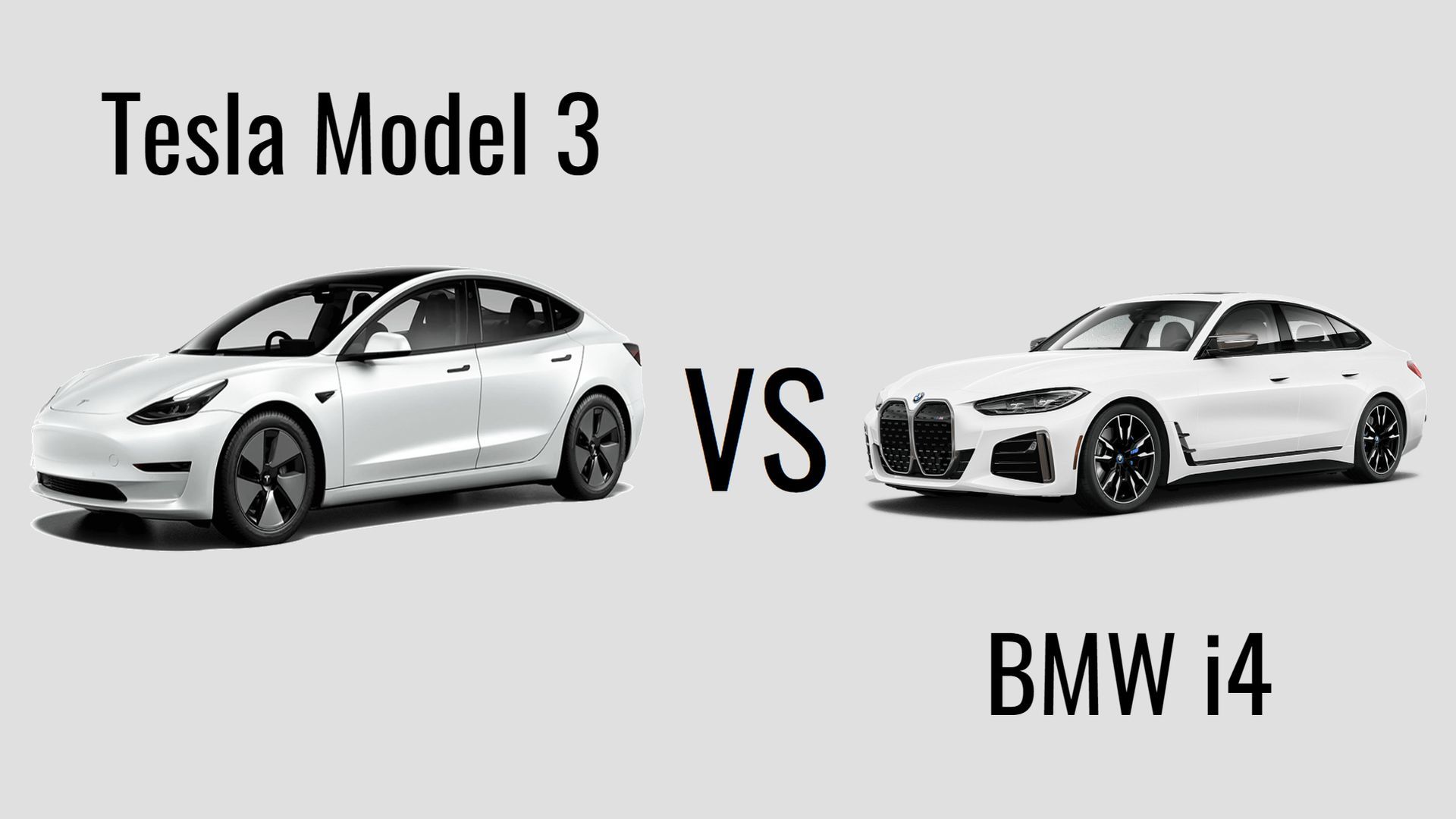Today we’re here to compare BMW i4 vs Tesla Model 3, some of the best EV options out there.
Let’s compare: BMW i4 vs Tesla Model 3
As more and more all-electric vehicles are released by automakers worldwide, it won’t be long before internal combustion engines are totally replaced by electric motors. The i4, the newest invention from BMW, is fundamentally a German sports car. It has each and every design feature that a BMW embodies, and these features give it a stronger and more radical appearance. The big grille in particular may turn off some BMW enthusiasts, but the electric i4 looks unmistakably similar to BMW cars powered by internal combustion.
There are other competitors for this brand-new, sporty, four-door EV. One of them is Tesla’s Model 3, which is the industry leader in electric vehicles. The Model 3 had more time to improve on its problems because of an older production lineup. Nobody should, however, undervalue the expertise of a 100-year-old carmaker like BMW. Without further ado, let’s compare the BMW i4 to its main competition, the Tesla Model 3, and determine which one is superior.
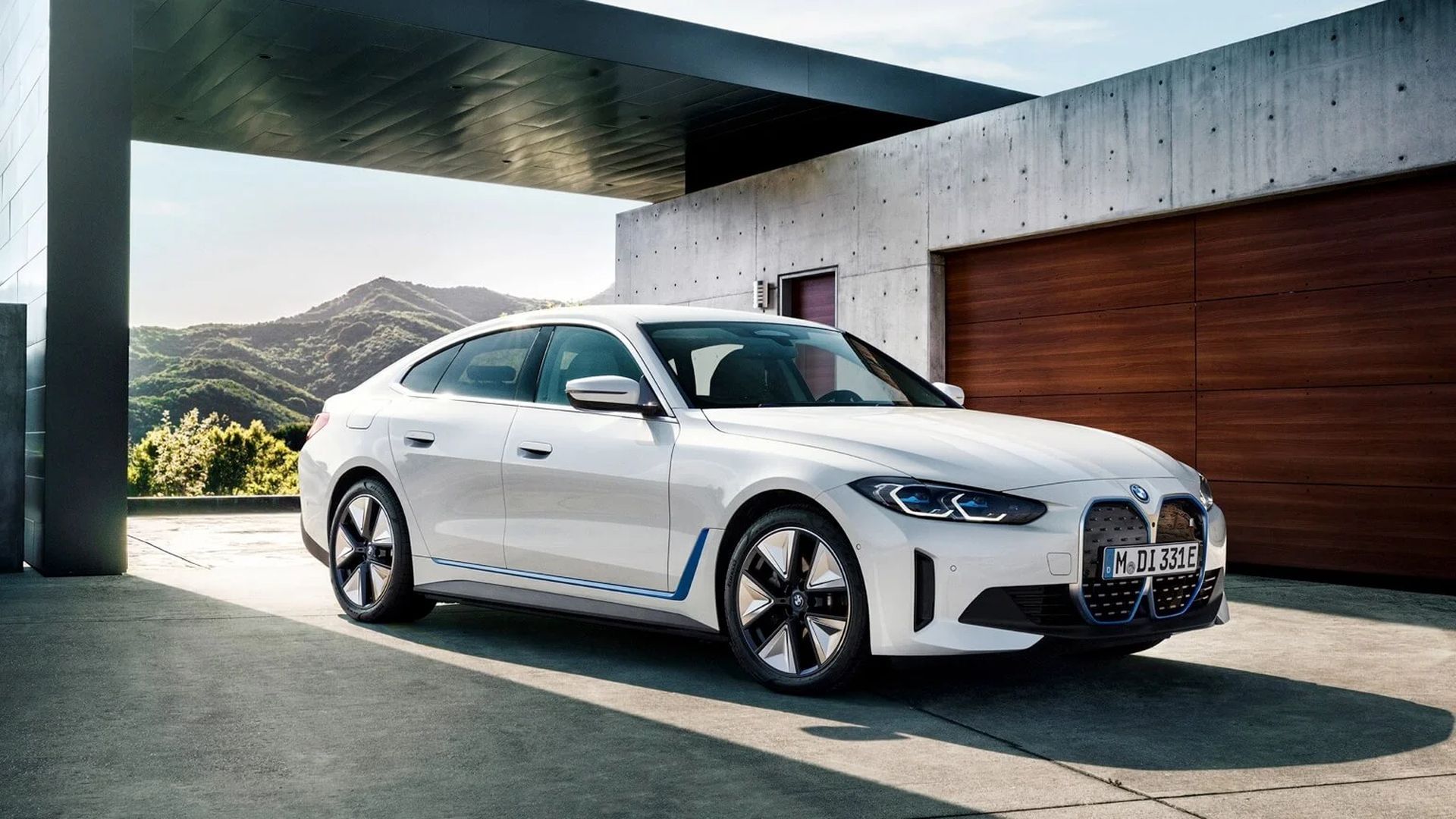
BMW i4 vs Tesla Model 3: Platforms and variants
The Standard Range+, which was formerly the entry-level model, is one of three Tesla Model 3 variants available. Following that are the Long Range and Performance. There are only two options available with the BMW. The M50 is significantly faster than the entry-level eDrive40.
But first, let’s get back to the fundamentals because these two cars were designed extremely differently! EVs are Tesla’s only focus, yet BMW has been producing combustion engines for many years. Tesla didn’t have to make any concessions in that regard; they simply continued to develop the greatest EV they could. BMW had to decide whether to build an entirely new electric vehicle or a compromised electric vehicle platform that could accommodate either an electric powertrain or a combustion engine. They chose the latter option.
Now, that’s not to suggest that if it’s not from the ground up, you can’t make a decent EV. The Hyundai Kona and the Kia e-Niro, for example, disprove this. But generally speaking, if the car is on a specific platform, you can do so much more with it.
BMW i4 vs Tesla Model 3: Design
Before we discuss the important topics like strength and range, let’s first talk about styling.
First off, there is a culture difference between these two firms that is present even at the design stage. There are various approaches to styling, and this has an impact on decisions regarding fabric and cabin layout. It doesn’t always follow that one is incorrect just because you prefer one over the other. They just differ, and they will satisfy a range of tastes.
The i4 is quite recognizable to BMW enthusiasts on the outside, and to the untrained eye, it looks very identical to its combustion 4 series predecessors. The M50 receives a few design changes to create a quick coupe that is uniquely German in design and aesthetics.
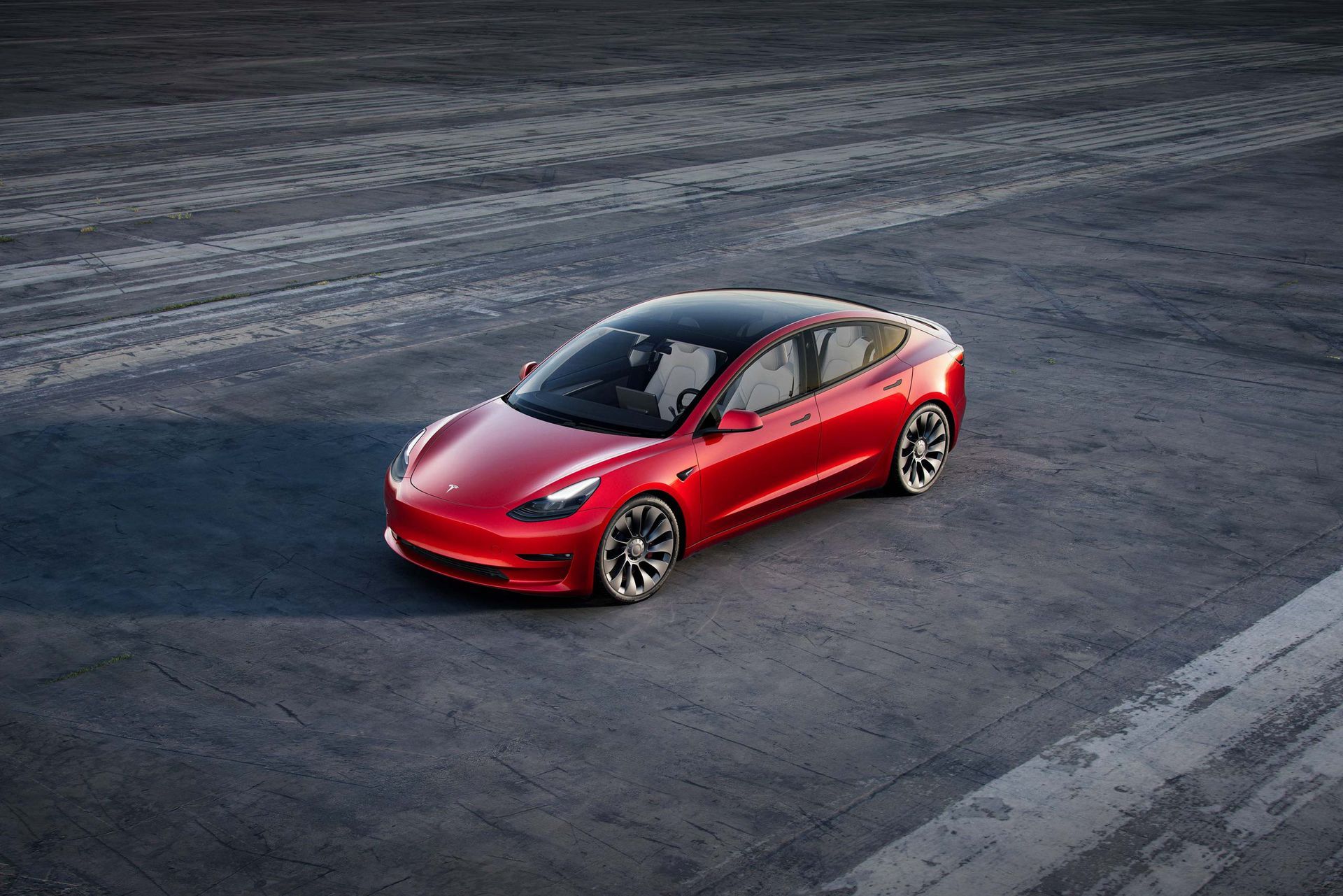
On the other hand, the Tesla appears to have been created in a wind tunnel. The front end starts lower and rises gradually. It’s challenging to tell which Model 3 you’re looking at unless you know to look for the wheels and a small spoiler at the back.
Interior styling is exactly what enthusiasts of the brand would expect from a BMW. A beautiful touch, the long curving screen that spans the dash contrasts sharply with the Model 3’s more projecting, rectangular screen. The Model 3 has a modern and minimalist aesthetic due to the absence of buttons. The BMW is far more conventional and doesn’t disturb the sense of familiarity that many people have become accustomed to. More plush and supple leathers will be used in the materials.
BMW i4 vs Tesla Model 3: Dimensions
When considering these cars, the dimensions aren’t exactly the most glamorous subject, but it’s vital to bring them up because they might influence some people’s decisions. Both are slender and low. In fact, their length, width, and height are nearly similar. The front and rear ends of the BMW do appear to sit a little higher, at least to the naked eye.
The glass roof that extends all the way back to the trunk gives the Model 3’s interior a slightly airier feeling. The advantages of creating an EV on a custom platform start to become clear. Three adults may fit in the rear with a little bit more room, and since there is no transmission tunnel, the center passenger won’t be in excruciating pain after a short while of driving. Additionally, the center console has significantly more room. The Model 3’s large trunk and frunk continue to add a little extra room. Although the Model 3’s opening has drawn some criticism, it’s still a great area for a car with that footprint.
BMW i4 vs Tesla Model 3: Battery, range and charging
As discussing batteries becomes a little more technical, let’s start with Tesla. We must extrapolate the sizes of the batteries because Tesla doesn’t officially disclose their sizes. They also constantly make incremental changes rather than going through the typical model year cycles. Changing certain Model 3s to an LFP battery pack with a larger capacity is one of them. So you can now get the base Model 3 with a 57.5kWh battery, which has a reasonable range of 250 miles in real-world conditions. The other two varieties, though, are more similarly priced, so let’s compare them now.
Compare the eDrive40 to the Long Range Model 3. Compared to the Model 3, which is presently available with a 75kWh useable battery, the BMW has a usable battery of 80.7 kWh. That’s a minor size victory for the BMW, but will it provide you more range? The WLTP stats marginally favor Tesla, and while we believe there is not much of a difference in the real world, if pushed, we would bet on the Tesla to win. In our opinion, both of these vehicles have a real-world range of 300 miles. Around town, a little bit less in the winter and a little bit more in the summer.
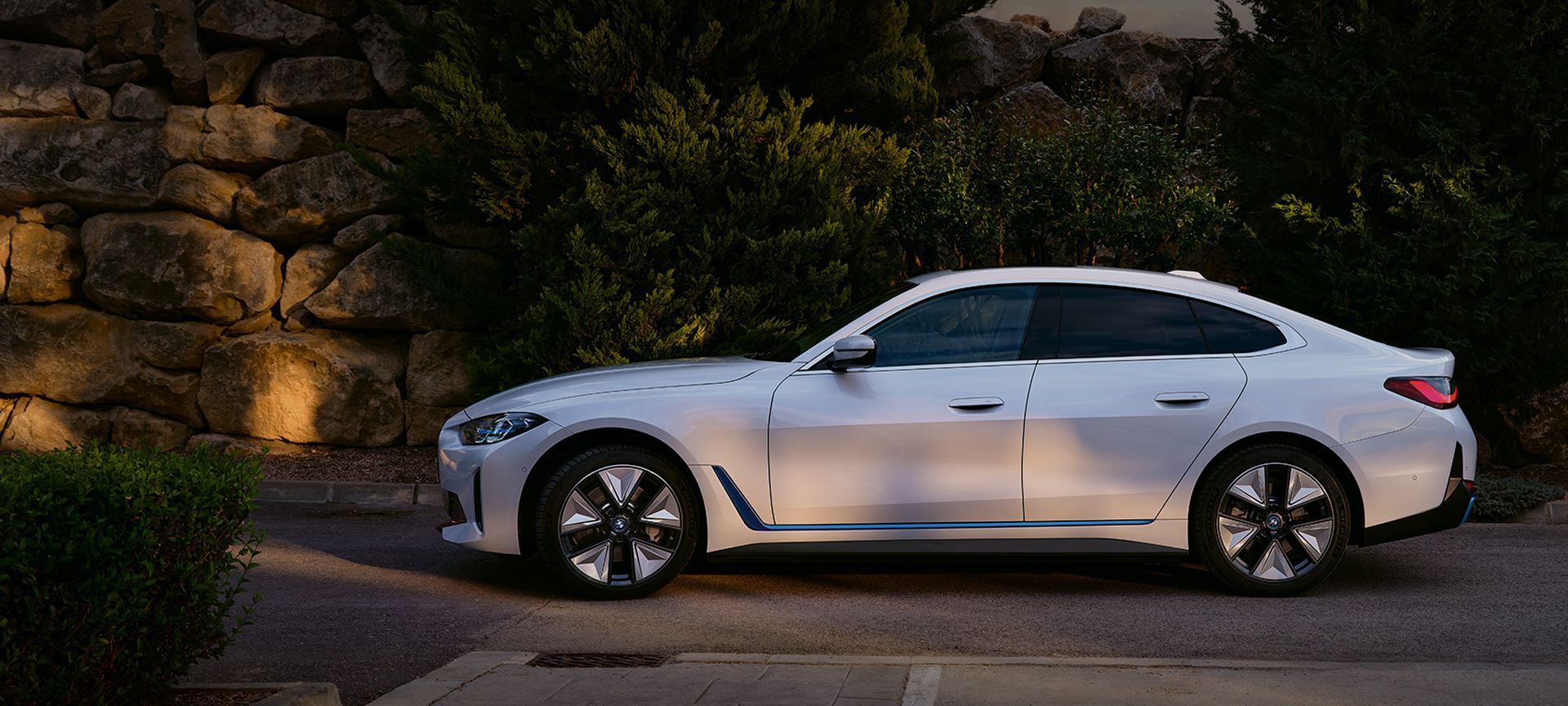
What if, however, you need a little bit of speed and must choose between the M50 and the Performance? The battery packs that come with both vehicles remain the same. And according to both our real-world estimates and the official ratings, Tesla wins by a very slim margin.
Given that the Tesla gets more mileage out of its battery pack, it appears that it is the more efficient vehicle. But given that the BMW weighs about 200 kg more than its competitor in this situation, it’s not very surprising.
What happens then when you try to recharge them? It’s safe to state that both of them are decent choices!
Let’s start with AC charging, which will require 11kW from each of these autos. It’s also rather good on DC. Even the entry-level Model 3 can operate at around 175kW of DC speed. In terms of the BMW, both variations will have a 200kW peak. The maximum output of the Model 3’s Long Range and Performance versions will both be 210kW. The result is once more a draw. But since the Tesla gets a little bit greater range from the energy you put back into its battery, we’re going to award it the victory. Additionally, you have limitless access to the Supercharger network.
BMW i4 vs Tesla Model 3: Performance
The exciting part has arrived: performance! Let’s just get the base Model 3 out of the way by stating that it has a very respectable 239kW of power and can sprint from 0 to 62 mph in 6.1 seconds.
Let’s compare the Model 3 Long Range to the eDrive 40. For the BMW to defeat the Tesla, it will need to have a lot of power given the extra 200kgs it is carrying. The BMW can reach 62 mph in 5.7 seconds with 250kW. It is therefore faster than the base Model 3, but the Long Range, which accelerates to 62 mph in just 4.4 seconds, easily outruns it.
Let’s compare the i4 M50 and the Model 3 Performance now. Given that both vehicles are all-wheel drives, gaining traction will be simple. 400kW and 795Nm of torque are available from the BMW. The Tesla narrowly edges it out in terms of power with an anticipated 413kW, but falls short in terms of torque with 660Nm!
In comparison to the Model 3 Performance’s lightning-quick 3.3 seconds, the M50 will accelerate to 62 mph in 3.9 seconds. However, it’s important to keep in mind that German manufacturers can have a reputation for under-promising and over-delivering. Therefore, we anticipate that these two automobiles will have nearly equal 0-62 mph and 1/4-mile times. The Tesla will probably accelerate somewhat quicker off the line, while the BMW might be little more powerful pulling through speeds on the Autobahn due to the higher torque.
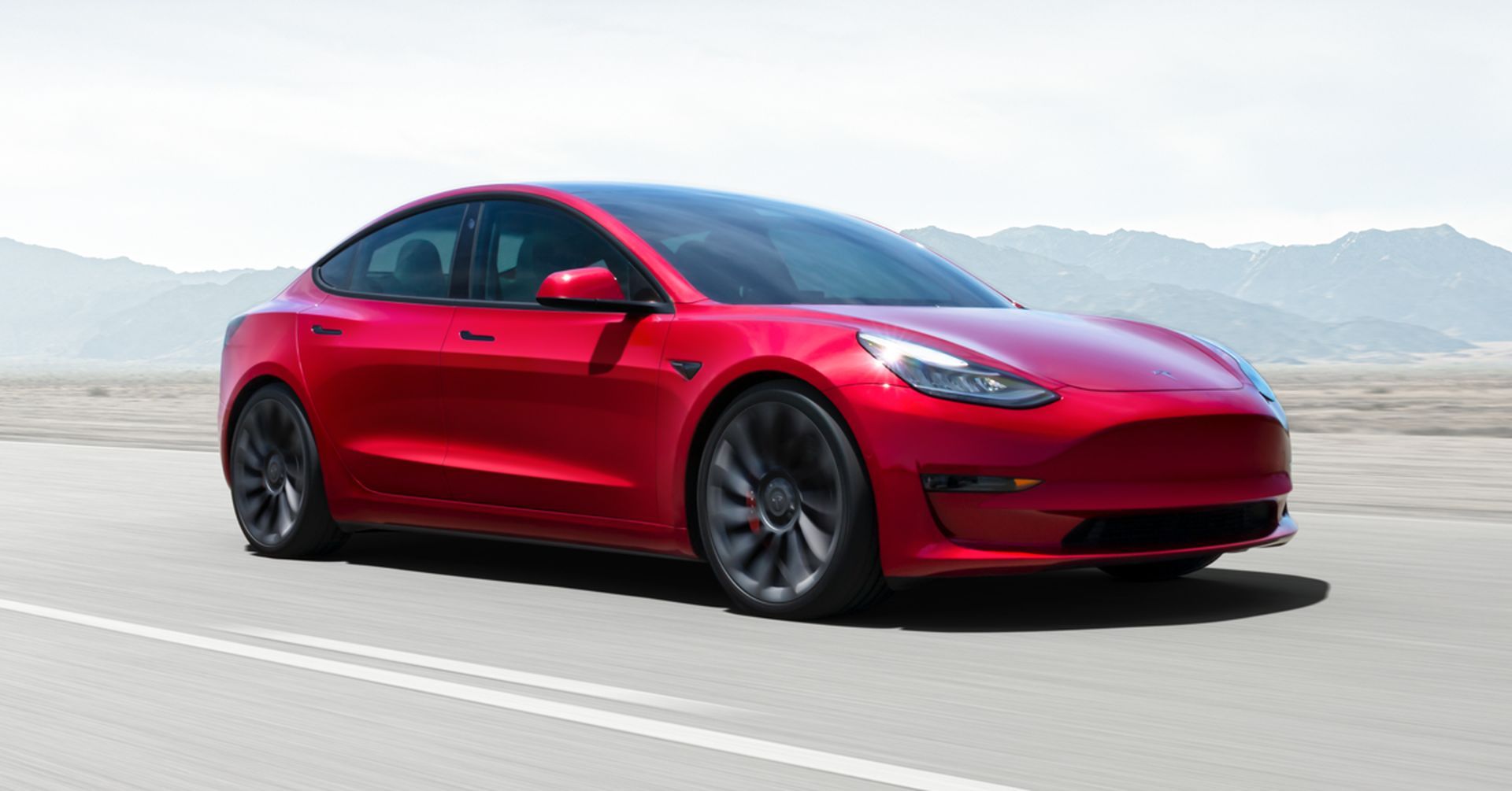
Final verdict
We compared BMW i4 vs Tesla Model 3! What then distinguishes the two cars? Why would one be preferred over the other?
The Tesla will be a better choice in terms of pure numbers. It’s a tiny bit quicker, a tiny bit more range, improved efficiency, improved charging, and greater internal space. But when you go to buy a car, as we all know, it’s not just a game of numbers. It’s what seizes your attention. And for certain people, the interior ambience of the BMW will always prevail. Along with the familiarity of shopping at a high-end German brand. Others may find it to be an easy decision due to the Tesla’s technological supremacy and the Supercharger network.
It’s unlikely that consumers’ budgets will influence them in any manner. These automobiles are fairly comparable in price, depending on where you live and the incentives that are offered. Someone who can afford one is likely to be able to afford the other regardless of the difference in price, even if it is only a few thousand.
In either case, debating over which of these two terrific cars is the better purchase is a great problem to have! Have you heard about Subaru’s 1,073 horsepower electric car?

